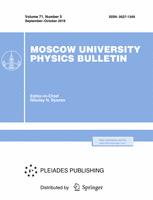The field dependences of the short-circuited photomagnetic current when crystals of GaAs with oxygen, chromium, and iron impurity are illuminated with light of different wavelengths are investigated. In GaAs(O) with bipolar Hall mobility 0 « μ*(n)< μ(n) for i$_{pm}$(B) in addition to the usual diffusion component n = i(+), which is linear with respect to the magnetic field B, reverse components n = i(-) are found, the contribution of which increases as the depth of penetration of the light decreases. In the region 50-77°K a maximum of these currents is also observed and a sharp increase in the effective rate of surface recombination. In GaAs(Fe)μ$^*_{n}$= μ$_{n}$ is monopolar for T < 110°K; i$_{pm}$(B) in the temperature range 8-100°K contain explicitly nonlinear n-i(-) (B) and linear p-i(+)(B). A maximum of n-i(-) is also observed at 50-77°K. In GaAs(Cr) μ*(n)= μ(n) is monopolar at room temperature, and in P - i$_{pm}$(B) a contribution that is nonlinear in В n-i(-) is also observed. The results obtained indicate the presence of a layer of p-conductivity ≥ 10$^{-5}$ thick, common for all the crystals, situated under the spacecharge layer. The presence of a layer leads to strong compensation of the photomagnetic current in the case of n-type volume photoconductivity, and can produce an antigate system with a considerable reduction in the effective rate of surface recombination for volume p conductivity.
Кафедра физики полупроводников



